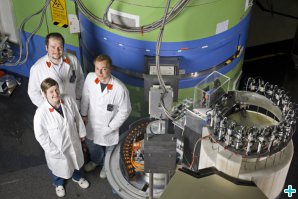To study dynamics: Neutron Spectroscopy
Browse our tabs to learn about the techniques and facilities where you can find them
Inelastic neutron scattering
In order to characterise the physico-chemical properties of a material, knowledge of both structure and dynamical behaviour is required. The structural investigation addresses the average position (and magnetic orientation) of the atoms and their spatial correlations, whereas the dynamics provides additional information about their temporal evolution (spatial and temporal correlations).
For some purposes, the structural characterisation is sufficient to explain macroscopic phenomena, like many phase transitions for example. To get a deeper insight into the microscopic behaviour as well as the transmission of perturbations and information across the material, however, the study of atomic dynamics must also be taken into account.
Depending on the considered timescale and the nature of the material, it will allow the observation of localised motions as well propagating motions responsible for transport mechanisms such as thermal diffusion, thermal and electrical conductivity, sound, optical and dielectric properties, magnetic susceptibility, magnetoresistence, ferroelectricity, and more.
Furthermore, the observation of the interplay between competing phenomena involving different energy- and timescales will make way for a better comprehension and production of smart and/or functional materials.
Inelastic neutron scattering, i.e. neutron spectroscopy, probes the atomic and molecular movements over length scales ranging from few angstroms to tens nanometers, and over timescales from tens of picoseconds up to a few microseconds.
Therefore, it can be used to investigate a wide variety of different physical phenomena: diffusional or hopping motions of atoms, the rotational modes of molecules, sound modes and molecular vibrations, recoil in quantum fluids, magnetic and quantum excitations or even electronic transitions.
Methods
In these pages you will find information about the most important neutron spectroscopy methods: three-axis spectroscopy and back-scattering spectroscopy, that both use Bragg reflection from crystals for selecting (and thereby measuring) neutron energies.
Time-of-Flight (TOF) spectrometry measures the time of flights of neutrons to determine their energies and Spin Echo Spectroscopy (NSE) uses the velocity change of the neutrons to infer the energy transfer.
